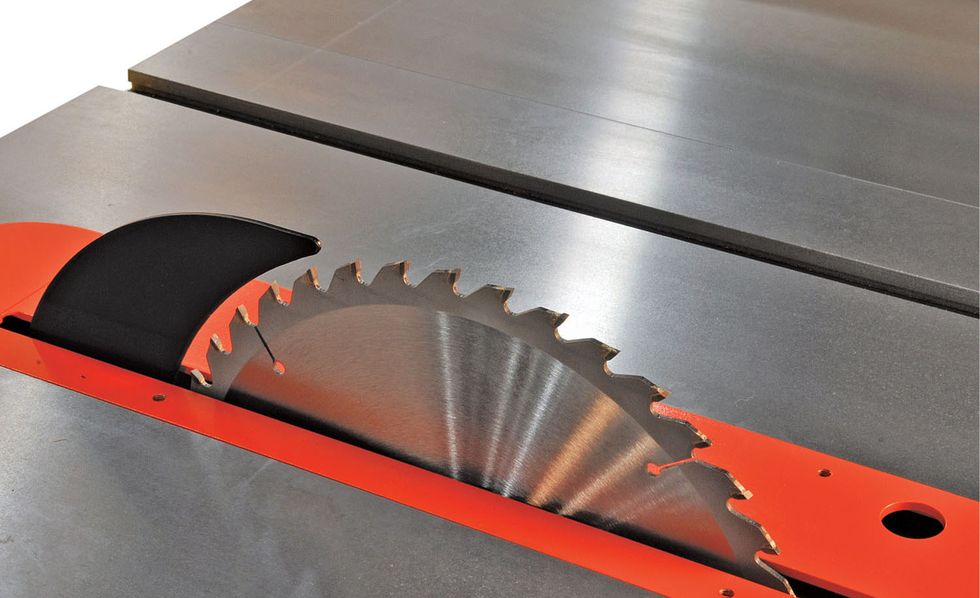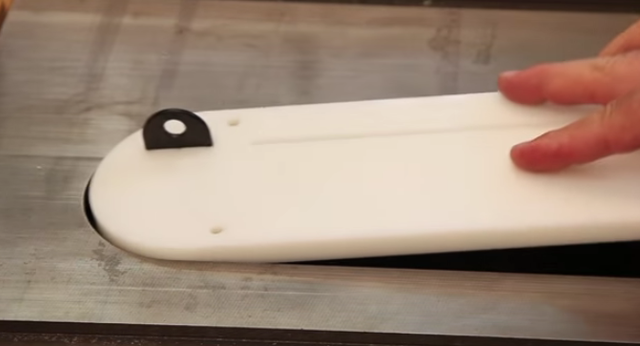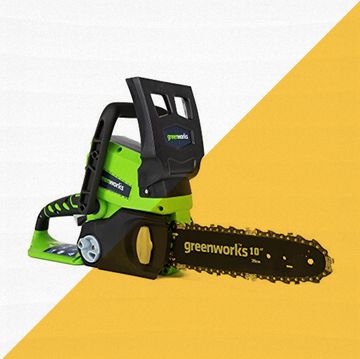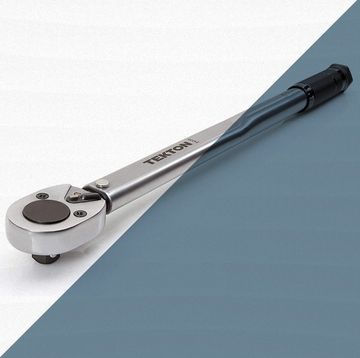The focal point of most wood shop projects revolves around a table saw. Table saws are useful and most woodworkers couldn't work without them—but they can also be extremely dangerous. The problem of kickback is what causes most injuries and here's how to prevent it.
The Journal of Trauma estimates that 31,400 people are treated in the ER each year from table saw injuries. This isn't including those who hurt themselves on the job. The majority of these injuries are due to kickback.
Kickback is the term for wood that suddenly and without warning is propelled back towards the operator at a high rate of speed. The two main causes of injury from kickback is trauma from the wood striking the head, chest, or torso of the woodworker, or the wood moving so quickly that an operator doesn't have time to take their hand off of it and it gets pulled across the saw blade.
Part of knowing how to prevent kickback is by understanding why it happens. As wood is set against the fence and pushed across the table saw into the blade, it can begin to lose pressure against the fence. As it drifts away from the fence, the wood gets caught on the backside of the saw and is quickly jerked in the direction the blade is turning (towards you).
In the video below the man is attempting to demonstrate kickback and almost injuries his hand in the process. He mistakenly thinks he can move his hand away in time, and just barely does even though he knows the kickback is coming.
There are a few ways to minimize the risk of kickback that are inexpensive and really just common sense:
Use a Riving Knife
A riving knife is a thin piece of metal shaped like a surfboard fin, and comes with your table saw. It locks into place behind the saw with the curvature facing the saw. The riving knife is there to prevent the wood from getting caught in the back of the saw if it drifts away from the fence.
Use a Splitter
A low profile alternative to the riving knife is a splitter that is added to a zero-clearance throat plate. The splitter is just a nub that sticks up and serves the same purpose of riving knife by keeping the wood from drifting into the blade.
Consider a Crosscut Sled
Another way to prevent kickback is by using a crosscut sled. These jigs keep your hands away from the blade and move the fence to the front of the blade instead of the side.
Always Use a Push Sitck
Using a push stick instead of your hands to push the wood through the blade is also an important safety measure that many woodworkers get lazy about doing. You can buy a push stick or make your own, it doesn't matter as long as you use one.
We found the video below from Woodcraft Magazine very helpful in explaining the concept of kickback as well as some of these solutions.
Don't Let Your Guard Down
It's important to always use the safety equipment that comes with your table saw which can include a riving knife and blade guard. If your saw doesn't have a riving knife, install one before using it. Respect your table saw and it's power, because if you don't, it can give you a unpleasant very unpleasant reminder how fast that blade it moving in the form of nasty bit of kickback.

Timothy is a lifelong DIY enthusiast who is fixated on smart home tech, beautiful tools, and wrenching on his FJ62 Land Cruiser. He’s the DIY editor at Popular Mechanics and also the founder of the home improvement site, Charles & Hudson, the Webby-nominated family site, Built by Kids, and Tool Crave. When not working, you’ll find him on his board or bike enjoying the LA weather with his family and friends. Follow him on Instagram and Twitter.















